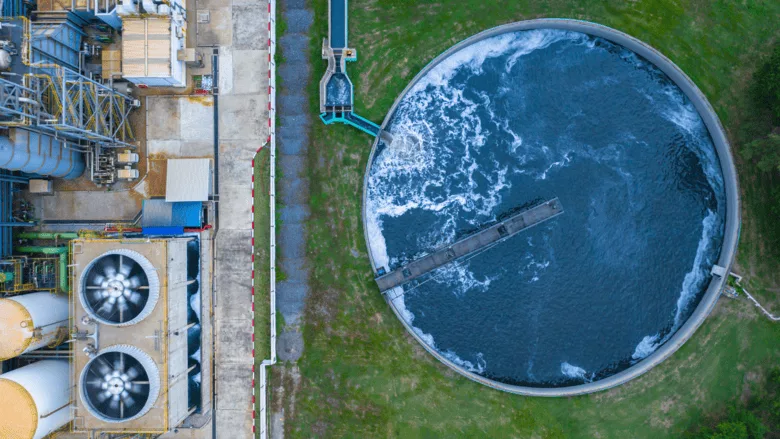What’s Changing in U.S. Water Policy? Key 2025 Updates to Environmental Rules
Presentations made on the National Environmental Policy Act; the Clean Water Act; and the Endangered Species Act

Image via Avigator Photographer from Getty Images
At the National Water Resources Association's April 2025 water-policy conference in Washington, D.C., legal experts Patrick Sigl and Gary Gold reviewed major federal regulatory changes affecting the water sector—particularly regarding the Clean Water Act (CWA), National Environmental Policy Act (NEPA), and Endangered Species Act (ESA).
The National Water Resources Association (NWRA), an advocacy group focused on water-supply issues held its annual water-policy conference in D.C. from April 28-30, 2025 at which lawyers Patrick Sigl and Gary Gold outlined the Trump administration’s and the federal court’s attitudes and implementation of the CWA; the National Environmental Policy Act (NEPA); and the Endangered Species Act (ESA).
NEPA and the Council on Environmental Quality
“Uncertainty” about federal funding as directed by NEPA and the CWA is prevalent among utilities, according to Sigl, who said NEPA “has been extremely volatile since late” 2024.
Specifically, under NEPA the Council on Environmental Quality (CEQ) was established to provide guidance and oversee the NEPA process for federal agencies, including developing procedures for environmental reviews. CEQ regulations outline the specific requirements for federal agencies to comply with NEPA, ensuring that projects are carefully assessed for their potential environmental impacts.
In 2022, “phase one” revisions of the CEQ were finalized by the Biden administration. Those revisions primarily reversed changes to CEQ regulations made in 2020, focusing on the “purpose and need” definition, “direct, indirect, and cumulative effects,” and agency flexibility in NEPA procedures.
In 2024, the administration finalized “phase two” revisions of the CEQ, which were more comprehensive and included codifying changes from the Fiscal Responsibility Act of 2023, such as page limits and facilitating categorical exclusions, while also restoring elements from previous regulations while adding new requirements for environmental justice and climate change.
“During the Biden administration, we had the phase one and the phase two CEQ regulations that we were working through,” said Sigl, who added “Those were all being litigated by various states and interests.”
However, on Jan. 20, 2025, President Donald Trump issued the executive order directing the CEQ to rescind those NEPA regulations as part of his “unleashing American energy” initiative, according to Sigl, “Again, those NEPA regulations acted as a guidepost for the various federal agencies to provide parameters for their NEPA processes. It was a way to have a centralized location for that, and then the federal agency would have their specific NEPA regulations to implement their NEPA processes,” he said.
Furthermore, on March 4, 2025, CEQ issued an interim rule rescinding those CEQ regulations with the rescission effective April 12, 2025, Sigl said, adding, “The idea was that all the individual federal agencies, would implement their own regulations to be consistent with the CEQ guidance.”
On April 8, 2025, CEQ directed those agencies to withdraw their own NEPA implementing regulations, and a template for getting through the NEPA reviews was issued, and on April 9, Trump issued an executive order that established sunset dates for certain regulations and direct repeal of any that are inconsistent with recent Supreme Court decisions, Sigl said.
“That really sort of sums up where we’re at on NEPA,” he said. The level of changes imposed on NEPA have fostered “uncertainty” on those who are trying to get projects built and operational, Sigl added.
CWA
On May 25, 2023, the Supreme Court issued its decision in Sacket v. EPA that narrowed CWA’s definition of “waters of the United States” (WOTUS), saying under the CWA federal jurisdiction over WOTUS extends only to relatively permanent bodies of water connected to traditional interstate navigable waters, and wetlands with a continuous surface connection to those waters, a decision that reduced the scope of federal authority to regulate water pollution.
In addition, on Sept. 8, 2023, the Biden administration implemented a regulation amending the definition of WOTUS to conform with the Supreme Court’s decision. That rule faced litigation on multiple fronts questioning if it was consistent with Sacket v. EPA, according to Sigl.
However, on March 12, 2025, the EPA and the Department of the Army issued a joint memorandum designed to provide field staff with guidance on implementation of “continuous surface connection” that is consistent with the Supreme Court’s decision in Sacket, and both agencies say they are to provide further guidance and rule making on the direct surface connection requirement.
“So that’s really the state of affairs on WOTUS,” said Sigl, who added the Trump administration is “going to go through some public listening sessions” and is “really trying to get feedback on what was essentially this ping pong back and forth between what the waters of the U.S. were to try and get a reasonable interpretation” of the continuous surface connection.
ESA
The ESA has been in place since 1975, and it has been upheld by the Supreme Court, according to Gold, who added the federal government issued a regulation that defines “harm” under the ESA to mean harm or degradation to habitat by a project.
However, on April 17, 2025, the Fish and Wildlife Service (FWS) and the National Marine Fisheries Service (NMFS) issued a joint proposal to rescind the regulatory definition of “harm,” which includes habitat modification. Those agencies say the effort to rescind the regulatory definition of “harm” is proposed because it is contrary to the best meaning of the statutory term “take” and the FWS and NMFS “are undertaking this change to adhere to the single, best meaning of the ESA.”
The definition of “take” in the ESA means an action that actually kills or injures wildlife, and such an action could “include significant habitat modification or degradation where it actually kills or injures wildlife by significantly impairing essential behavioral patterns, including breeding, feeding or sheltering,” according to the proposal by FWS and NMFS.
Therefore, under that definition the operation of a water project, or the development of water infrastructure might be subject to the jurisdiction of the FWS and the NMFS if such a site is home to habitat of an endangered species, even if there are no such species on the site, according to Gold. “It’s a pretty broad definition of ‘harm’,” he said.
In response, on April 17, 2025, the FWS and the NMFS issued a joint proposal to rescind the regulatory definition of “harm” because it runs contrary to the best meaning of the statutory term “take” and they “are undertaking this change to adhere to the single, best meaning of the ESA.”
“What the (proposed) rule means if it’s adopted, (is) habitat alone might be insufficient to trigger the requirements and authorizations under the rule,” and can have implications not only for water operations, but also for water infrastructure development projects, Gold said.
Looking for a reprint of this article?
From high-res PDFs to custom plaques, order your copy today!




